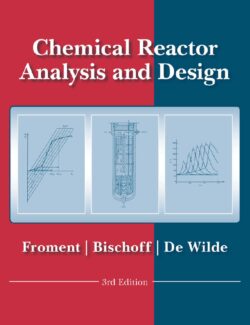Description
This is the Third Edition of the standard text on chemical reaction engineering, beginning with basic definitions and fundamental principles and continuing all the way to practical applications, emphasizing real-world aspects of industrial practice.
The text includes updated coverage of computer modeling methods and many new worked examples. Most of the examples use real kinetic data from processes of industrial importance.
New to this edition:
– Early chapters teach students how to benefit from the application of quantum chemical methods to real Processes.
– The single event concept is introduced and applied to commercial vacuum gas oil hydrocracking.
– The mechanism of reactions has been accounted for in greater detail.
– The insertion of more realistic kinetics into structure models of the catalyst has also allowed accounting for the role of catalyst deactivation by coke formation in important commercial hydrocarbon conversion processes.
– Deviations of what was previously called ideal models and behavior are dealt with along entirely new lines, made possible by the progress of CFD computational fluid dynamics also made available by commercial software.
– The chapter on fluidized and transport bed reactors goes into greater details than before on the catalytic cracking of heavy oil fractions and reports on simulations based upon computational fluid dynamics.



Leave us a comment
No Comments